10 Major Ports In The Caribbean
The Caribbean region refers to a group of islands in the Caribbean Sea, a part of the western Atlantic Ocean. It has many islands, islets, cays and reefs.
The Caribbean is known for its tropical climate, diverse cultures and cuisine, music, beaches, historic cities, architecture and so on, making it a perfect holiday destination.
However, the Caribbean region also has many important trading ports which connect it to the rest of the world.
Let us explore ten major Caribbean Ports in this article.
1. Port of Colon, Panama
Colon Port is situated on the eastern Caribbean side of the Panama Canal. It handles a variety of cargo on its refurbished and modern terminals.
It is a well-sheltered facility whose quays and canal entrances in the Atlantic sector are protected by a breakwater. Approximately 380,000 tonnes of cargo and 166,000 passengers are handled at the port annually.
Despite its size, the Colon Port handles one of the highest traffic flows in the region. Per Statista, the Port of Colon handled the highest volume of containers in Latin America and the Caribbean in 2020. The number in 2020 stood at 4.45 million TEUs.
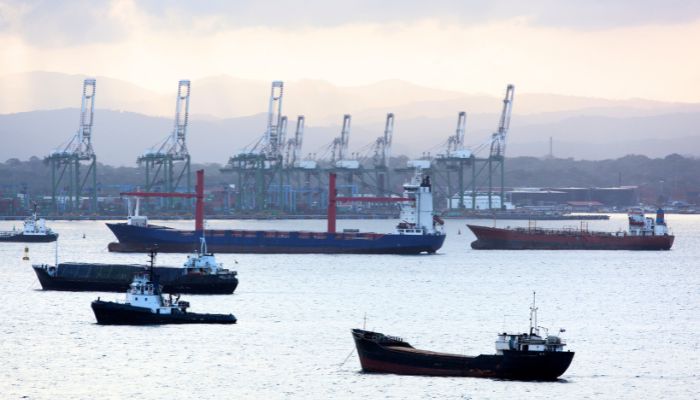
This trend has continued for the past three years as the port dealt with more than 4 million TEUs, with 4.38 million TEUs handled in 2019.
It has many terminals, one important being the Manzanillo International Terminal which is a transhipment centre. Containers, RORO and break bulk pass through this facility.
The Colon Container Terminal has 4 berths and 74 hectares of storage area. This allows the terminal to accommodate ships of all sizes, including 2 neo-Panamax ships simultaneously.
2. Port of Caucedo, Dominican Republic
Port of Caucedo is situated on the Caucedo peninsula that opens to the Caribbean Sea on the southern coastline of the Dominican Republic. It has a deepwater container facility that handles transhipments between the Caribbean and Latin America.
It will cater to the region’s growing demands for industrial products, agricultural goods and garments.
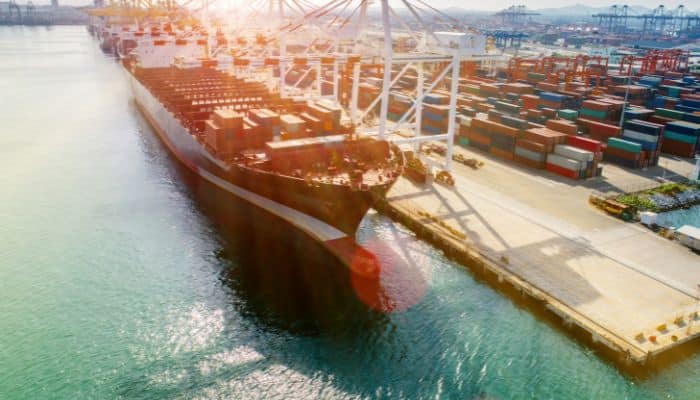
The most modern port of the island country, Caucedo, is managed by DP World. The DP World Caucedo is a port terminal and a global free zone about 25 kilometres from Santo Domingo.
In 2017, the marine terminal welcomed the largest vessel to visit the Dominican Republic. It was the Malta-flagged container ship called Cosco Yantian, with a length of 350.55 metres and a container capacity of 9469 containers.
The main service of the terminal is loading and offloading cargo from the vessels that visit the port. Other services include the storage of loaded containers, assistance in customs verification, electricity and water provisions, handling oversize cargo, offloading vehicles, storing imported vehicles, loading merchandise into containers and ground transportation.
Adjacent to the port is the Caucedo Logistics Center, the 1st and the only free trade zone located within a Dominican Republic port. Clients can also rent spaces in the logistics park.
3. Port of San Juan, Puerto Rico
San Juan is a major trading facility situated on the northern coast of Puerto Rico. It is one of the busiest ports in the Caribbean, functioning as a maritime gateway between North and South America.
It is equipped to handle diverse cargo, including containers, automobiles, petroleum, and bulk cargo like grains and cement.
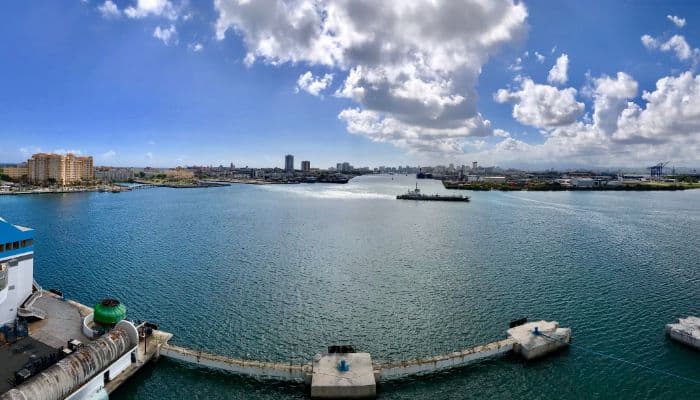
Its strategic location near the Panama Canal and the US east coast makes it a popular transhipment hub for cargo destined to and from Central and South America and the countries in the Caribbean.
San Juan is a key economic driver for Puerto Rico, creating thousands of jobs and propelling the national economy.
San Juan handles approximately 9,600,000 tonnes of cargo and over 4000 cargo vessels, 670 passenger ships and roughly 1,350,000 tourists. The container terminal handles 1,830,000 TEUs annually.
The port has 16 piers, of which 5 are dedicated to cruise ships and the remaining 11 for cargo vessels.
Puerto Nuevo terminals are the largest in the port and deal with containers on their 3 berths. The Isla Grande terminals deal with breakbulk, RORO and project cargo.
Piers 4, 5 and 6 are dedicated to bulk, general cargo and petroleum products. Additionally, the port has modern facilities for handling vehicles, refrigerated cargo and other specialised cargo.
4. Port of Kingston, Jamaica
Kingston is an important Caribbean port and also the main port of Jamaica, handling more than 80% of its maritime trade. It is situated on the southern coast of the island country and is an excellent natural harbour protected by a narrow peninsula.
Approximately 2530 ships, 16,200,500 tonnes of cargo and 1,900,000 TEUs are handled by Kingston port annually.

Kingston Port comprises Port Bustamante and numerous private berths. It has a huge container terminal and facilities for dealing with break bulk, liquids, dry bulk, LPG, RORO and passengers. The port has a dry dock as well, including many multipurpose berths.
Additionally, the port has many small terminals for shipments of cement, oil, lumber and gypsum. Other commodities handled at Kingston include grains, fish, motor vehicles, aggregates etc.
The container terminal has been integrated with the adjoining break bulk wharves at Newport West. This has provided increased flexibility in dealing with diverse cargo, its distribution, export and also transhipment.
Close to the transhipment terminal is the Kingston Export Free Zone, which offers incentives to foreign and local investors to establish custom-free operations in the area.
5. Port of Freeport, Bahamas
The port of Freeport is located on the southwestern side of Grand Bahama Island near Hawksbill Creek. The deepwater seaport is one of the largest and busiest facilities in the Caribbean. It deals with varied cargo, including agricultural products, construction material, seafood, aggregates, containers, RORO, bulk, liquid fuels and general cargo.
Due to its closeness to the USA, several companies established their transhipment business in this port, making it a key transhipment hub. It also serves as a maritime gateway for cargo destined to and from the Caribbean, Central and South America and other regions.
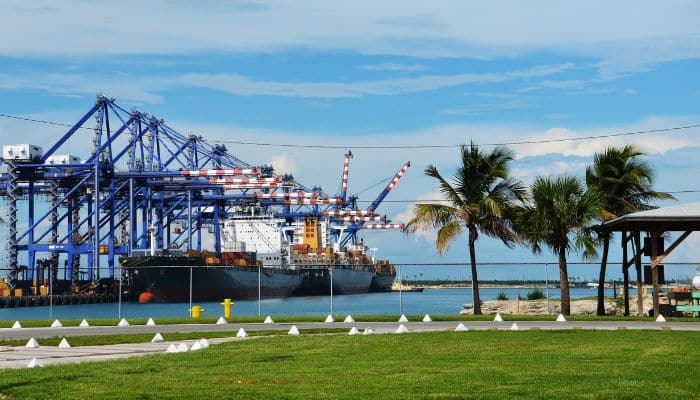
Operated by Grand Bahama Port Authority, it has 3 major terminals, including the Freeport Container Port, the Freeport Oil Terminal and the FreePort Cruise Port. The latter can accommodate 8 cruise ships simultaneously and functions as a repair centre.
The Freeport Container Port is the biggest container handling facility in the Caribbean. The Oil terminal handles liquid bulk, mainly petroleum products, chemicals and LNG.
Approximately 2250 ships, 2,80,000 tonnes of cargo and 1,100,000 TEUs are handled by the port annually.
6. Port of Cartagena, Colombia
Cartagena Port lies on the northern Caribbean coast of Colombia in South America. It is one of the oldest and principal ports in the Americas, with a long history of trade and commerce going back to colonial times.
Its strategic location provides access to the main international trade routes in the Caribbean Sea and the Atlantic Ocean. It also serves as a gateway for trade between the Caribbean, Latin America and other regions of the world.
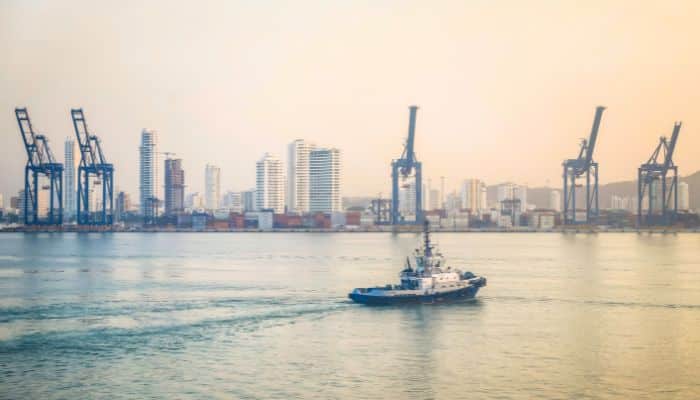
The port is equipped with modern infrastructure and has container terminals, multipurpose terminals, bulk terminals and other specialised facilities for accommodating different types of cargo.
Major exports include fruit and vegetables, textiles, oil, coffee, vehicles, resins, nickel etc. The port receives shipments of chemicals, packaged food, paper, machines and raw materials. Around 1420 ships, 7,116,687 tonnes of cargo and 7,95,380 TEUs are handled at the port annually.
7. Port of Havana, Cuba
Havana is the main port of Cuba, located on the island’s northern coast. It is one of the busiest ports in the Caribbean, handling both commercial traffic and passengers.
It has 14 berths to accommodate all types of ships. Sugar is the main export commodity, followed by molasses, citrus fruits, minerals and liqueurs. Main imports comprise general cargo, machines, fuel oil, containers and fertilisers.
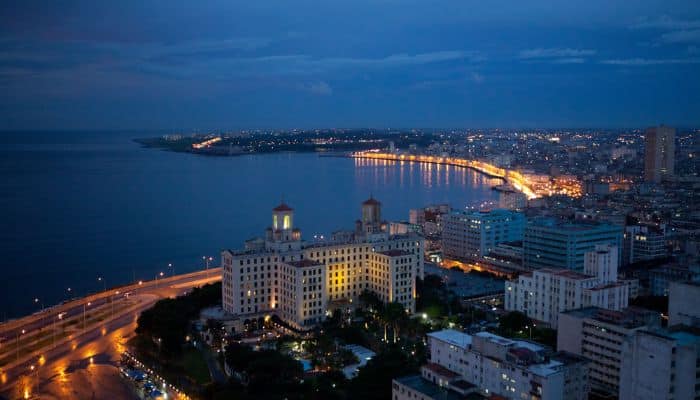
The harbour has 19 mooring buoys, including 4 for naval ships. It also offers bunkering and repair services. Approximately 500 vessels and about 270,000 TEUs are handled by Havana Port annually.
The port has many terminals, but the major ones include the Terminal Sierra Maestra, which deals with containerised cargo. Cruise ships and passengers are dealt with at Terminal de Cruceros.
International cargo, including containers, bulk and general cargo, is handled at Terminal de Trafico Internacional, which has storage and warehousing facilities.
Terminal de Energia deals with energy goods, including oil, gas and other fuels. It has facilities for tanker ships to load and unload the cargo.
8. Port of Bridgetown, Barbados
Bridgetown is the capital of Barbados and has a seaport called the Bridgetown Port. It is the main entry point for around 90% of cargo needed by the island country’s manufacturing and retail sectors.
Located on the island’s southwestern shores, it is adjacent to the city centre. It offers various services such as cargo handling, storage, logistics, passenger transportation, and tourism-related services.
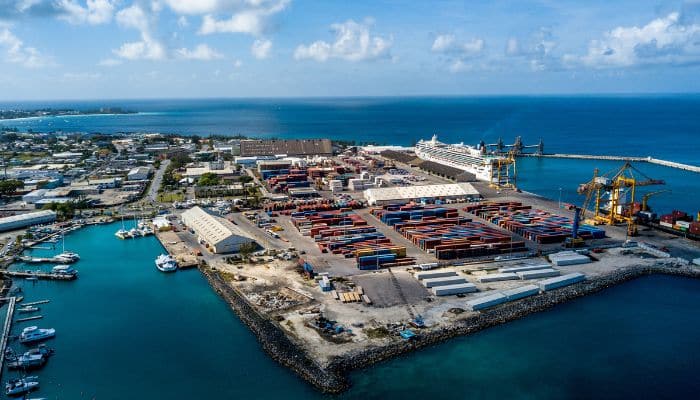
It has two main terminals, the Bridgetown Port Terminal and the Pelican Island Terminal.
The former processes cargo shipments on its numerous berths. It has a warehouse for storing goods and an expansive container yard for the stacking and handling of containers.
The latter accommodates cruise ships and has a modern terminal building. The premises has several shops, duty-free stores and restaurants. It has another pier for accommodating smaller passenger ships and specialised berths for handling the world’s biggest cruise ships.
It records approximately 1004 vessel calls, handles 854,199 tonnes of bulk cargo and 99,335 cruise passengers, and has a total tonnage of about 1,258,251.
9. Port of Georgetown, Cayman Islands
Port of Georgetown is located on the western side of the Grand Cayman Islands. The busy Caribbean port is a hub for cruise vessels and cargo carriers.
It is a maritime gateway to the Cayman Islands and also facilitates trade and commerce on the island. Approximately 508,800 tonnes of cargo, 39,000 TEUs and 821,156 passengers are handled annually here.
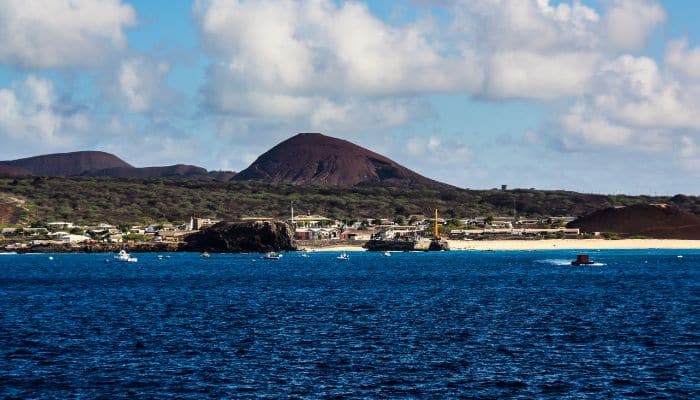
There are many terminals at the port, such as the Royal Watler Cruise Terminal, which is situated in the heart of Georgetown. It is a modern facility with multiple berths for accommodating many large ships simultaneously. It also has customs and immigration facilities, shops and restaurants.
Lying on the southern side of the port premises is the cargo terminal which handles general cargo and containers. Private yachts and boats are dealt with at the George Town Yacht Club, whose marina has 90 slips and a clubhouse.
10. Port of Oranjestad, Aruba
Oranjestad is the capital of Aruba, and its seaport is a key centre for commercial cargo traffic and tourists entering Aruba, one of the islands of the Lesser Antilles. It is sheltered from the southwestern side by a coral reef and stones.
The port has a cargo terminal and a cruise terminal. The latter has more than 1240 m of berthage for accommodating five cruise ships.
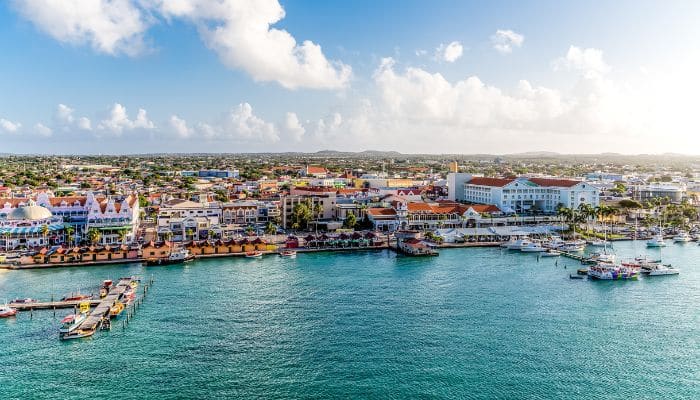
The cargo terminal has a container berth for handling containers and general cargo. It has specialised facilities for handling liquids, RORO ships and oil tankers. It also has a 50,000 m2 of storage area.
Approximately 950 ships, including 300 cruise ships, 165,000 tonnes of cargo and 51, 800 TEUs, are handled at the port annually. It is a hub for regional transportation as it links Aruba with other Caribbean islands via ferry services.
You might also like to read-
- 10 Major Ports In Afghanistan
- 10 Arctic Ocean Facts You Might Not Know
- 10 Longest Ships In The World
- 10 Buildings In The World Inspired By The Sails Of A Ship
- 10 Denmark Strait Facts You Might Not Know
Disclaimer :
The information contained in this website is for general information purposes only. While we endeavour to keep the information up to date and correct, we make no representations or warranties of any kind, express or implied, about the completeness, accuracy, reliability, suitability or availability with respect to the website or the information, products, services, or related graphics contained on the website for any purpose. Any reliance you place on such information is therefore strictly at your own risk.
In no event will we be liable for any loss or damage including without limitation, indirect or consequential loss or damage, or any loss or damage whatsoever arising from loss of data or profits arising out of, or in connection with, the use of this website.
Do you have info to share with us ? Suggest a correction
Disclaimer :
The information contained in this website is for general information purposes only. While we endeavour to keep the information up to date and correct, we make no representations or warranties of any kind, express or implied, about the completeness, accuracy, reliability, suitability or availability with respect to the website or the information, products, services, or related graphics contained on the website for any purpose. Any reliance you place on such information is therefore strictly at your own risk.
In no event will we be liable for any loss or damage including without limitation, indirect or consequential loss or damage, or any loss or damage whatsoever arising from loss of data or profits arising out of, or in connection with, the use of this website.

About Author
Zahra is an alumna of Miranda House, University of Delhi. She is an avid writer, possessing immaculate research and editing skills. Author of several academic papers, she has also worked as a freelance writer, producing many technical, creative and marketing pieces. A true aesthete at heart, she loves books a little more than anything else.
Latest Maritime Knowledge Articles You Would Like:
Subscribe To Our Newsletters
By subscribing, you agree to our Privacy Policy and may receive occasional deal communications; you can unsubscribe anytime.















